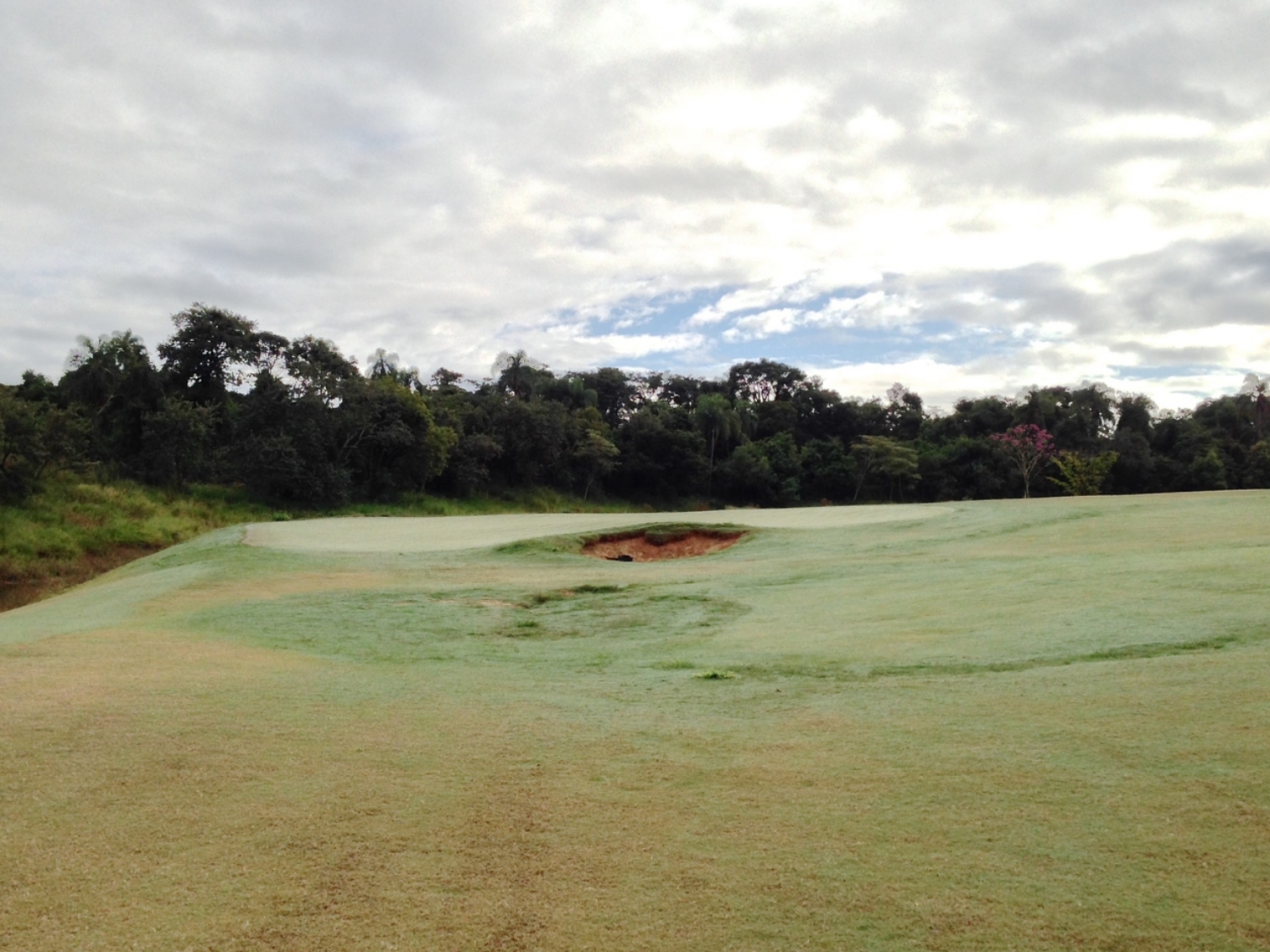Look familiar? I didn't think so.
Many of us U.S. natives commonly refer to the USGA National Championship, or U.S. Open, simply as "The Open." I never do, for there really is only one "Open," and that is the Open Championship. Call it snobby, but my reasoning is part keeping things proper and part that you would rarely ever mistake the two tournaments.
The U.S. Open is played on soggy, treelined courses with narrow fairways and deep rough squeezing in and thwarting any ball slightly off line. The greens are exceptionally fast and surrounded by the same limiting rough. As famous as Watson's greenside chip in on 17 at Pebble Beach was, it was also almost just luck hitting out of a lie like that.
While the R&A may do their best to narrow and lengthen their venues in the Open rotation, it is still impossible to deny the differing playing characteristics of a links and a traditional U.S. Open course. On the Rota, the grass is brown and running fast. Fairways are a bit wider to allow for the speedy turf and the wind. The rough, except in times of heavy rainfall (Mother Nature usually dictates the conditions on Open courses), usually offers varying chances of recovery, as opposed to hacking it toward the fairway and hoping your wrists don't break. Tight grass and contours are the defense around the greens, offering options, creativity, and most of all, a chance. It's a much more interesting and cerebral game.
This year, the lines blur a bit (almost literally--there are no grass lines besides around the greens), and it couldn't be more exciting. Fairways are wider and browner, the ball is bounding and demanding control, the rough is actually rough, the look is totally natural, and the grass is short around the crowned greens, providing all sorts of challenges and options.
Blurred lines--it almost does look like Open Championship course when you crop out the trees.
When I first heard that Bill Coore and Ben Crenshaw were going to restore Pinehurst No. 2 some 4 or 5 years ago, my initial thought was, "I really hope they don't hold back." I've been to the Carolina Sandhills and seen the native texture of the pine barrens throughout the area, and I've seen old images of Pinehurst and Ross's No. 2 course. When I visited in 2007 and looked over the first few holes of No. 2 and some of the others on the property, I couldn't help but think of what was missing as I viewed out over the massive expanse of uniform bermuda grass and maintained "rough." You could still see that the greens and the bones of the course were great and intact, but the overall look and the fairway lines were clearly lacking something. Golf was born on naturally sandy sites, and there was potential here for so much more than a generic green resort course look.
When I first saw the images of what Coore and Crenshaw had done, I was so happy to see that they didn't hold back. All maintained rough was eliminated (35 acres in total of turf was removed) and instead replaced with sandy scruff and wire grass that existed long ago naturally prior to going wall to wall grass. Fairways were made wider with playing angles the same as in old aerial photos, and all of the bunkers were restored to a much more natural look that can only be obtained in sand. Furthermore, they switched to single row irrigation, eliminating over 60 percent of their irrigation heads and reducing water use by around 50%, depending on the climate. Not only is this better for the environment and the way of the future, it makes for transitional color and even firmer conditions on the outsides of the fairways. It almost looks linksy.
I've watched about 3 hours of the U.S. Open coverage so far this morning, and it has been great. The ball is running, especially on the outsides of the fairway. Sometimes this can be a distance benefit, as Phil Mickelson showed on his back nine, but often times flirting with danger leads to danger as balls run off into the "new" sandy native rough. However, said danger is not the end all be all it used to be. The natural mix of wire grass, pine needles, sand, wildflowers, and anything else can provide a stifling lie, but as we have seen so far today, many times it provides a chance for recovery and even a chance at going at the green. This approach to areas off the fairway is a far cry from U.S. Opens past. Speaking of those greens, the short grass is still present just as it was in the previous two U.S. Opens at Pinehurst. This time around though the turf seems to be firmer and faster, encouraging even more play off the great and bold contours of these green surrounds. Some greens like the 6th so far are showing that they are going to need either perfect shots to hold them or require a run in from off the green. It hasn't happened too much yet because the greens received some water this morning, but the players will adapt as the surfaces firm up and they keep going long. The firmer conditioning in the approaches will allow for this run in option, and it is going to be fun to watch as players now interact with the ground instead of firing darts.
In 1999 and 2005, this was a hack out. Now, Dustin Johnson and other players have a chance not only at advancing the ball, they can even sometimes fire at the green as he did here.
I am not going to call Pinehurst No. 2 a links, because it isn't (the closest categorization would be some sort of warm-season heathland). I'm not going to call the U.S Open 'The Open' either. However, both Pinehurst and the USGA are embracing the ideals of the game as it began and how it still is on many stretches of links land along the coasts of the British isles. Firm turf, an attention to how it plays versus how it looks, a totally natural sandy appearance, less watering and maintenance with great environmental benefits, wider fairways with better angles and more options, and short grass around the greens are all ideals in line with the natural game. And the great part about all of this is that the USGA is doing this without compromising what they like from their own end--defense to scoring. Players are still struggling to get below par, but the great difference here is that it is no longer the slog and hack fest of years past. There are chances for recovery, options for approaches into greens, and opportunities for creativity around the greens.
It's still the same testing U.S. Open golf, but it is much more interesting and compelling U.S. Open golf.

















